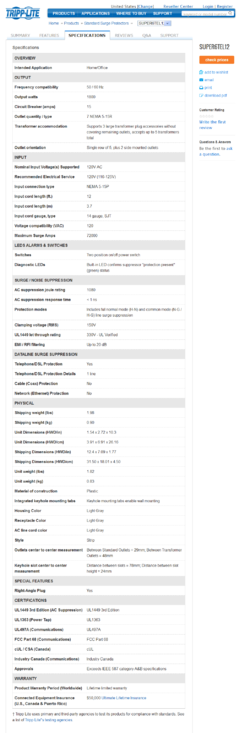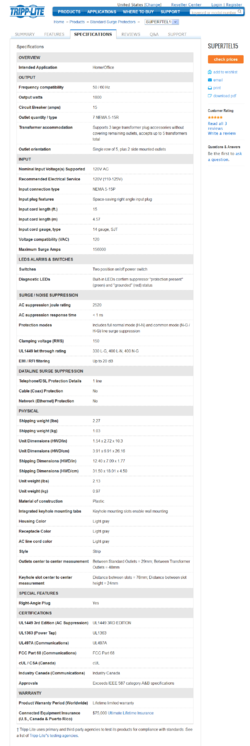- Joined
- Feb 18, 2002
Discussions on this topic are usually overly complicated for average user. But there's not that many numbers on specs you are really supposed to look at?
Let's just say you're at the store and have two or three in front of you with prices that make you think how do I know if one is perhaps overkill, and how do I calculate what I need for computer or TV or stereo equipment or both or all three? Should we use them with other household appliances, refrigerators or whatnot? There is a lot of misinformation out there. It shouldn't be that complicated.
Equipment examples are overclocked top of the line computer system with the usual printer, scanner, etc. accessories ; 50 inch Plasma with usual accessories like DVR, DVD, VHS; and a nice stereo system.
Not everything needs to go on the same strip, but can you look at these examples and post quick opinions for Computer/TV/Stereo equipment examples?
Thank you.
Other than cord length, there are really only two categories that I can see where they differ, how important are the differences between:
AC suppression joule rating 1080 vs 2160 vs 2520
Maximum Surge Amps 72000 vs 144000 vs 156000
Let's just say you're at the store and have two or three in front of you with prices that make you think how do I know if one is perhaps overkill, and how do I calculate what I need for computer or TV or stereo equipment or both or all three? Should we use them with other household appliances, refrigerators or whatnot? There is a lot of misinformation out there. It shouldn't be that complicated.
Equipment examples are overclocked top of the line computer system with the usual printer, scanner, etc. accessories ; 50 inch Plasma with usual accessories like DVR, DVD, VHS; and a nice stereo system.
Not everything needs to go on the same strip, but can you look at these examples and post quick opinions for Computer/TV/Stereo equipment examples?
Thank you.
Other than cord length, there are really only two categories that I can see where they differ, how important are the differences between:
AC suppression joule rating 1080 vs 2160 vs 2520
Maximum Surge Amps 72000 vs 144000 vs 156000
Last edited:




